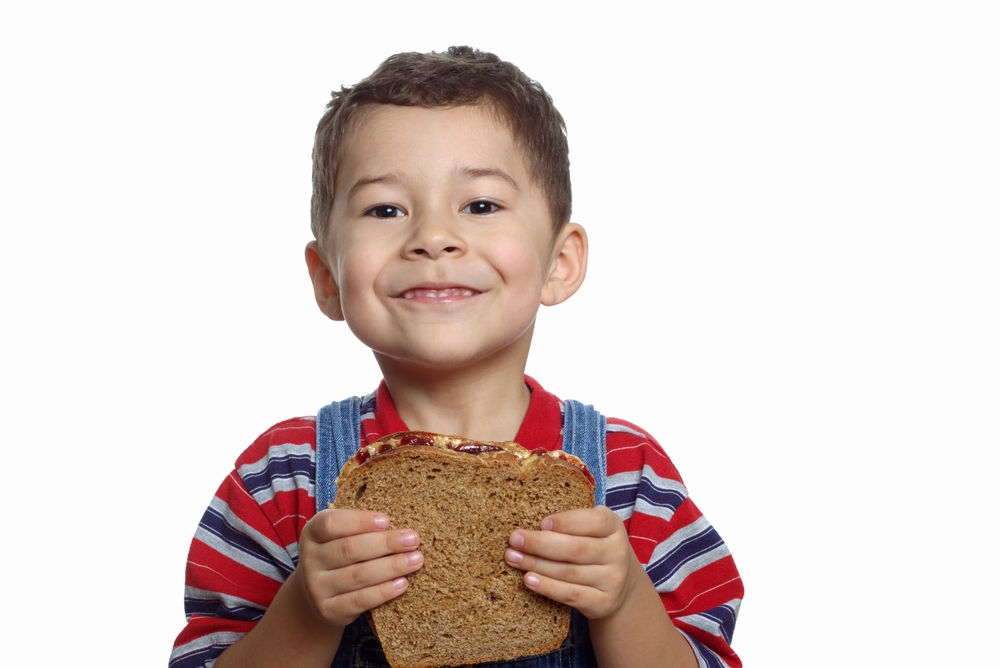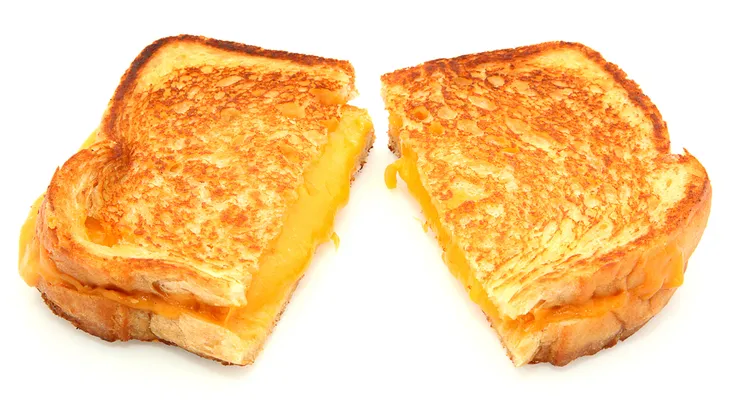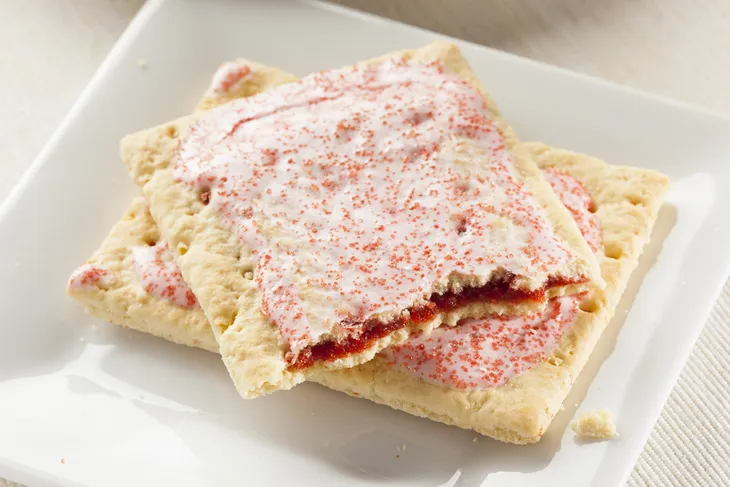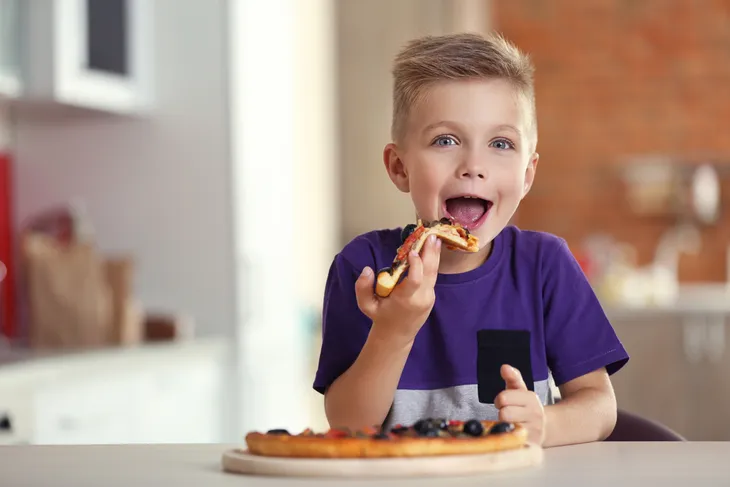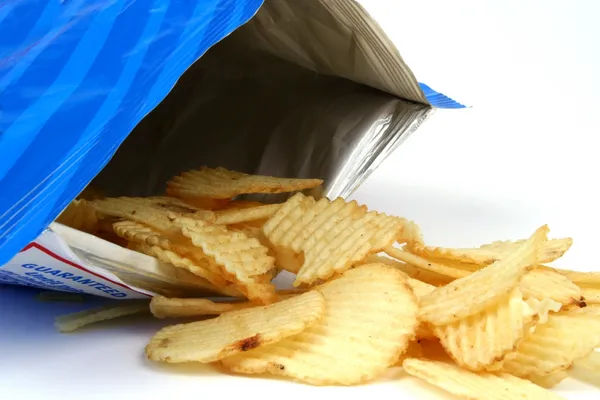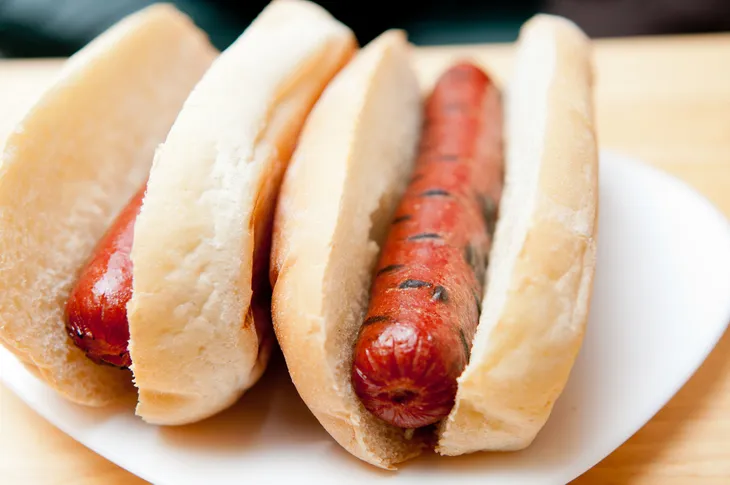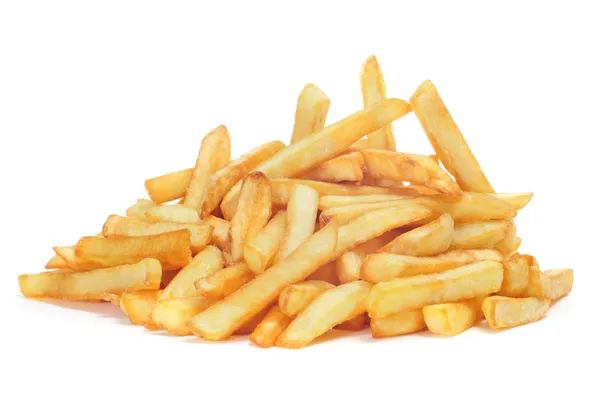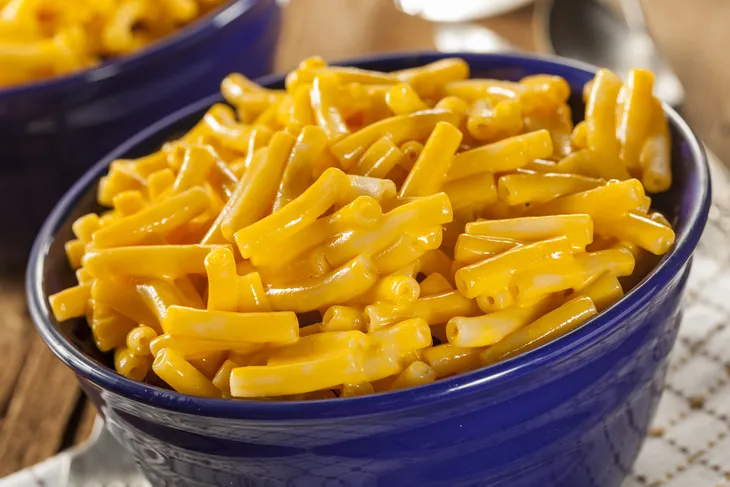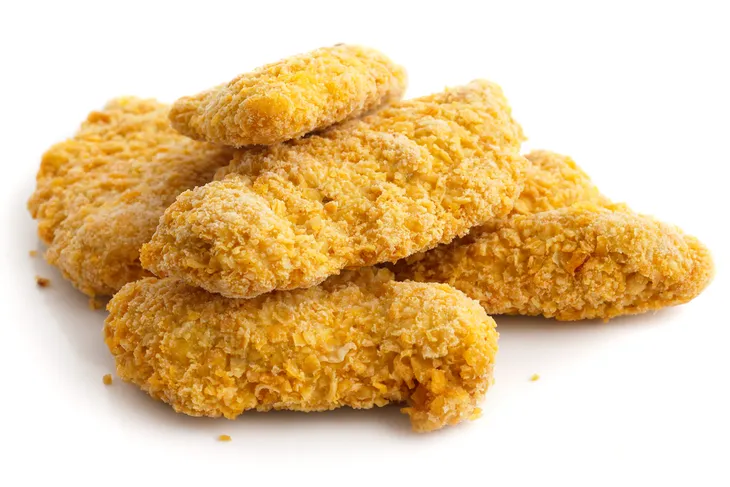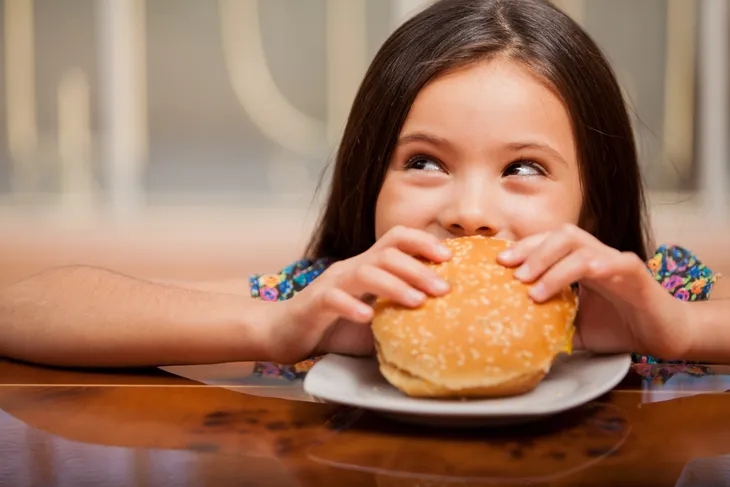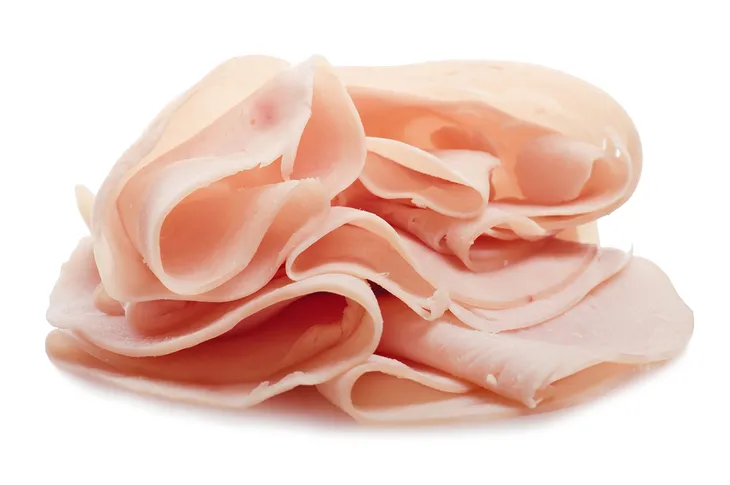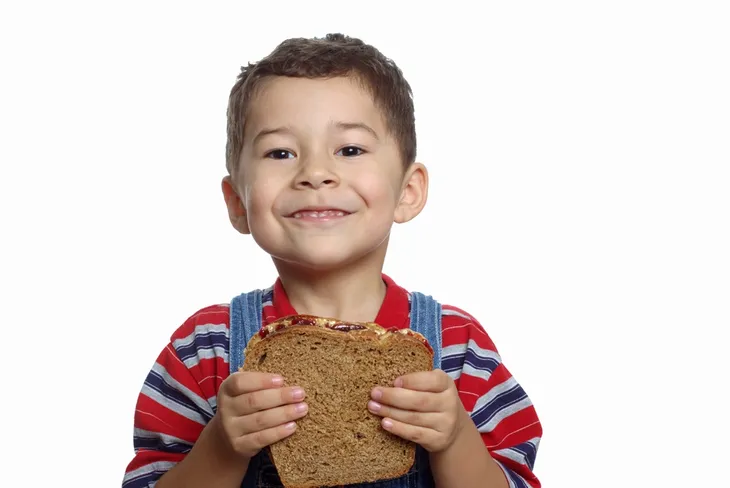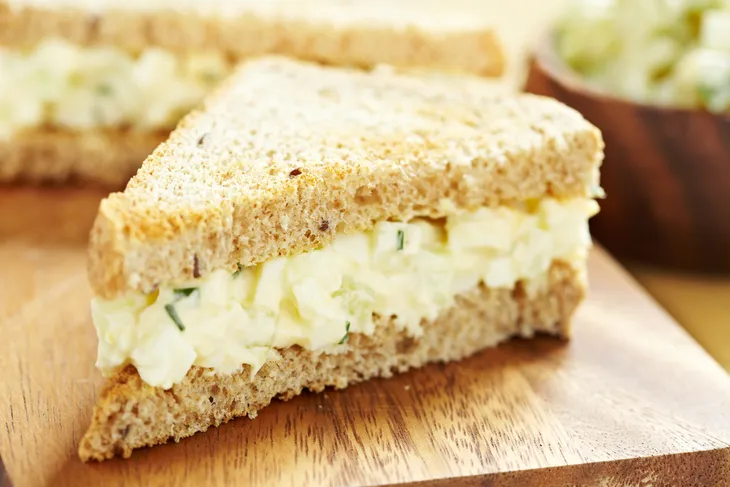Studies show that sending your child to school with a healthy lunch will keep him or her fuelled, attentive in class, and focused all day long. On the other hand, lunches and snacks filled with refined sugars, unhealthy fats, and void of other nutritional value will cause lethargy, fatigue, and even spur irritability.
It’s no secret that it can be difficult to pack healthy lunch items when it comes to picky eaters and it costs a lot of money and requires a lot of time to prepare super healthy lunches for children. However, when you consider that many pre-packaged foods and snacks are full of bad fat, added colors and preservatives, excess calories, refined starches and sugar, and high in sodium, the clever packaging of convenience foods and so-called “lunchbox favourites” gets a D- when it comes to nutrition. To help make some better decisions when it comes to packing a lunch for kids, try and avoid these 15 foods. Don’t worry, I also provide alternative replacements to fuel nutrition and success…
Grilled Cheese
A simple grilled cheese sandwich is a childhood favorite. Not only is it easy to make, but kids can’t resist the taste of ooey-gooey cheese. If you opt to make your sandwich with processed cheese slices, chances are you’re not even using real cheese. Sure, many cheese slices marketed to kids are fortified with calcium, but the “cheese” itself is often an oil-based, not a dairy-based, product, which contains little in the way of nutrition.
Also, researchers from the Consensus Action on Salt and Health found that most processed cheese slices contain more salt in just one slice than a lunch-portion bag of chips. However, you can make a healthy grilled cheese using whole grain bread, real cheddar or goat’s cheese, vegetables (i.e., tomato slices), and lean turkey or chicken.
Toaster Pastries
Toaster pastries are convenient for kids to take to school on busy mornings. They’re advertised as a complete breakfast, but those two tarts are filled with refined sugar, added colors, and bad fat. Plus, the majority of toaster strudels won’t provide any nutritional value because they lack essential protein, complex carbohydrates (whole grains), and calcium (from dairy). According to LiveStrong, some of the most popular brands contain upwards of 50 ingredients! Remember, fewer ingredients on the package the better. “Also beware that the serving size and nutrition facts for these products is often for one pastry, not the pouch of two,” writes the source.
For an easy breakfast option with a touch of sweetness, try toasting a whole grain English muffin, smearing with raw nut butter (i.e., almond butter), and topping each half with sliced bananas.
Pizza
Often leftovers make the ideal lunch, and if your dinner the night before was pizza, kids are usually thrilled! However, if your pizza pie was delivered, a slice can contain as much as 500 calories (the average cheese slice from Domino’s contains 265 calories, 10 grams of fat, and 565-grams of sodium) and not much else in the way of nutritional value.
Instead, make your own pizza at home using whole wheat pitas or naan bread, fresh veggies, low fat cheese, lean chicken, and homemade tomato sauce.
Snack Food
Snack-sized foods (i.e., chips and candy bars) are an unfortunate staple in children’s lunch bags. Kids tote snack options filled with empty calories and sugar to class and gobble them up at recess–only to experience an inevitable energy crash later in the afternoon due to fast-burning starches and refined sugars.
So instead of sending your son or daughter to class with a bag of chips, make a batch of baked, homemade veggie chips (i.e., using an assortment of sweet potatoes, beets, parsnips, carrots, and zucchini) and instead of a chocolate bar, opt for DIY granola bars made with whole grains, dried fruits, and raw nuts.
Hot Dogs
Hot dogs are an easy and popular lunch option for kids. Unfortunately, most store-bought wieners can be considered “unfit for human consumption,” according to recent research from the World Cancer Research Fund (WCRF), which reviewed over 7,000 clinical studies that linked processed red meats (i.e., hot dogs, bacon, processed ham and salami) to cancer. Sure, most store-bought weiners are high in Trans fats, sodium, and calories, but the real danger lies in a carcinogenic ingredient, sodium nitrite, which infuses the red coloring into the meat and causes the development of cancer-causing nitrosamines in humans.
Rather than hot dogs for lunch, pack a pita stuffed with lettuce, tomato, low fat mayo, and low fat cheese. Luckily, you can find lean, all-natural deli meats (i.e., turkey or chicken) that contain low sodium and no added colours or preservatives.
Fries
If your children buy their lunch at the school cafeteria, they may consider an order of fries a perfectly suitable lunch option. While French fries are cheap, delicious, and (temporarily) filling, deep fried potatoes are a sorry excuse for a fully-balanced lunch.
Sure, potatoes are considered a vegetable, but preparation is key. Consuming a diet high in deep-fried foods not only increases the risk of becoming overweight as a child, but Harvard researchers found that becoming overweight in adolescence greatly increases the risk of becoming an overweight adult. Additionally, researchers from the Hutchinson Center linked the regular consumption of deep-fried foods (more than once per week) with an increased risk of certain cancers (i.e., prostate cancer).
Kraft Dinner
Boxed macaroni and cheese is a quick meal to make for your child if he or she comes home for lunch. It’s also easily sent to school with kids in a thermos if cooked that morning. I used to love opening up my lunch box to see mac ‘n’ cheese in a thermal container! Unfortunately, that box of white pasta and cheese-flavored powder is a hotbed for added sodium (410-milligrams), coloring, preservatives, and empty calories (210) per 1/4 box serving–and really, who only eats 1/4 of the box! Wesley Delbridge, RD, an Academy of Nutrition and Dietetics spokesman who specializes in children’s nutrition also told Men’s Journal that children who eat this kind of sodium-packed food on a regular basis will begin to crave more salty, artificial foods.
To make a healthier lunch pasta for your loved one–boil up some whole wheat pasta and combine it with a tomato sauce that’s rich in fresh or frozen vegetables, and low fat (real) cheese. This way you’ll be certain of the ingredients your child is eating for lunch.
Chicken Fingers
Chicken fingers are easy to pop out of the freezer and into the oven, particularly if your children are small and still like to eat with their hands. However, not all chicken is created equally. In fact, a research study from the University of Mississippi analyzed and broke down a typical store-bought chicken nugget in their lab. Unfortunately, what they found was a product made up of roughly 40-percent chicken meat muscle while the remaining 60-percent was made up of connective tissue, fat, blood vessels, nerves, and bone spicules. As if that’s not bad enough, these foods are also super high in calories.
It’s okay to rely on this type of food once in a while. We all do it and let’s face it, the kids love eating them. Our advice is to make sure it’s not something they are eating on a super regular basis. Also, Men’s Journal advises parents to try purchasing brands that use whole-grain breading and chicken fingers that haven’t been flash fried. You should be able to tell whether they are flash fried by their saturated fat content, writes the source. Julie Ching, registered dietitian recommends offering grilled drumsticks to children as it’s similar to finger foods like chicken nuggets.
Fast Food
Kids love to eat fast food, especially if they can leave school property to visit a local restaurant. Enjoying the odd fast food lunch is an envious treat, however the health risk increases when fast food becomes a frequent weekly occurrence. We know that eliminating fast food entirely isn’t exactly practical. So our advice is to limit the amount.
Much of the blame can be laid on marketing, according to the Interagency Working Group on Foods Marketed to Children (IWG), which claims the fast food industry spends upwards of $5 million per day marketing unhealthy options to kids–98-percent of which are options high in unhealthy fat, refined sugar, and dangerous sodium levels. Talk with your kids about eating out. Healthier options can be found at local sandwich shops that serve fresh sandwiches, soups, and salads.
Luncheon Meats
If bologna, pastrami, or salami are staples in your kids’ lunch boxes, listen up! Numerous studies, including a fairly recent European study, took a look at processed meats (or preserved red meats) that were preserved via curing, smoking, or salting (i.e., bologna, ham, salami, pastrami, bacon, sausages, and hot dogs) and found that the more consumed; the greater the overall risk of developing cardiovascular disease, high blood cholesterol, weight gain (due to increasing saturated fats), and certain types of cancer (i.e., colorectal).
Specifically, the study linked those who consumed 20-grams of deli meat (or less) daily to a 44-percent increased risk of premature death due to these conditions. And the more consumed–the higher the risk! Luckily, subbing turkey and chicken slices, which aren’t processed using sodium nitrite, are considered safe options in lunch boxes.
Fruit Snacks
Just because this food has the word fruit in it, doesn’t mean it’s healthy! Even the ones that claim to be made with real fruit are “loaded with sugar, high fructose corn syrup, artificial colors and preservatives sweetened with fruit juice and contain no actual fruit,” writes LiveStrong. To put this one in perspective, pediatrician and pediatric obesity expert Dr. Yolandra Hancock, M.D., MPH told ActiveKids that a parent wouldn’t hand off a bag of sugar to their child for lunch, so why would they give them a bag of fruit snacks? One package can easily amount to 15-grams of sugar per serving. In addition to the sugar, the food coloring and wax added on to make them glossy is unhealthy for kids to eat.
So what’s a good alternative? Try packing a small container of trail mix. You can buy some pre-made or easily make a homemade batch with some mixed nuts, dried fruit, and even little pieces of chocolate.
Pre-Packaged Lunch Kits
We totally understand why pre-packaged lunch kits are a popular choice not only for kids, but also for parents. Heck, I even ate them as a kid and I remember how much I loved them! While it’s fine to treat a child to this once in a while, they’re not a practical meal on a regular basis. These lunch kits range from crackers and cheese, to build your own pizza, and even hot dogs! Unfortunately, there’s not much healthy about them. Dr. Hancock also told ActiveKids that these Lunchables are full of sodium, fat, and hidden sugar.
A good alternative to Lunchables would be to create your own. Buy some whole wheat crackers, low-fat cheese, and meat from the deli butcher (not the processed kind). You can also include cut up veggies like carrots, tomatoes, celery, or some fruit like grapes!
Peanut Butter and Jelly Sandwiches
Peanut butter and jelly sandwiches are a classic lunch meal. These sandwiches have been around for a long time and it’s not surprising why. They’re affordable for parents, easy to make, and kids love them! Unfortunately, they aren’t the most healthy thing to eat. “It’s obviously a favorite, but a lot of the nut butter spreads have additives as well as sugar,” says registered dietician Despina Hyde to CBS News. When purchasing nut butters like peanut butter or almond butter, be sure to choose ones that are all natural without any added sugar or hydrogenated oils. As for the jelly, it can also be a source of sugar and don’t even get us started on that white bread!
A healthier spin on this meal would be first of all, use whole wheat bread if you aren’t already. Don’t eat white bread because it’s completely void of any nutritional value. Purchase all natural peanut butter,and instead of using a sugary jelly, opt for real fruit slices like strawberries, banana, or even sliced apples. It might take them some getting used to, but who knows, they almost might love it!
Eggs Salad or Tuna Salad Sandwiches
The biggest concern with these types of sandwiches is the amount of mayonnaise. This heavy duty spread is best served in small doses because it’s loaded with “saturated fat, and it can spoil if it’s not kept cold enough. So can eggs and fish,” writes CBS News. Batches of egg and tuna salad are nice and easy for parents to whip up and many probably think they are healthy because eggs are healthy, and so is fish, but not when combined with other unhealthy fats like mayo.
You can still make these types of sandwiches for kids, especially the ones who really love it, just swap out the mayo for plain Greek yogurt. To give it some flavor, add a dash of lemon or lime juice and use some mashed up avocado to give it a little more texture. As for that canned fish…instead of using tuna, try salmon which is “a great lower mercury alternative,” says Hyde.
“Kid-Friendly” Yogurts
You might be confused to see yogurt on this list because it’s usually on any other healthy food list. That’s for probiotic yogurts that contain protein and other nutrients. Unfortunately, like most other kid-friendly foods. These little yogurts that are advertised for children are full of sugar! That’s why they love them! “A lot of parents pack yogurt but it is one of the biggest sources of sugar in the American diet,” says Hyde. Even though they look harmless with their brightly colored packages and little animated drawings, they’re actually really bad for children to eat.
Instead of packing these kid-friendly yogurts, try switching them over to a plain or lightly sweetened yogurt with some fruit. “A serving of fruit is about 1-cup, but for some kids that’s a lot, so give what they can eat,” says Hyde. The recommended amount is about 3-cups a day, but even just one or two is better than none.

